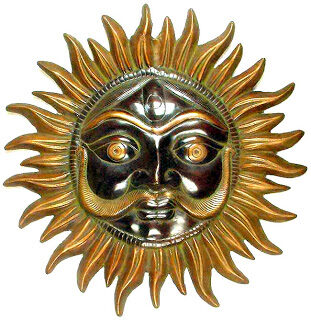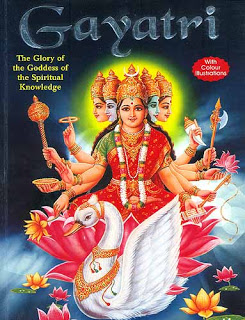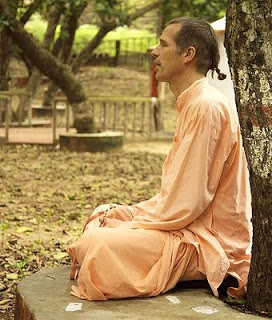The Winter Solstice occurs exactly when the earth’s axial tilt is farthest away from the sun at its maximum of 23° 26′. The term Winter Solstice is also colloquially used as Midwinter. More evident to those in high latitudes, it represents the shortest day, the longest night, and when the sun’s daily maximum position in the sky is the lowest. The seasonal significance of the Winter Solstice is in the reversal of the gradual lengthening of nights and shortening of days. Depending on the shift of the calendar, the Winter Solstice occurs on December 21 or 22 each year in the Northern Hemisphere, and June 20 or 21 in the Southern Hemisphere.
Sadly, though, it is a day that most people in the West barely notice, simply because of their fixation on Christmas, December 25, or the Gregorian new year, Jan 1. The Winter Solstice, however, marks the beginning of a new era, a potential blossoming of consciousness and the resurrection of spirit. Astro-theologists say that it marks the day when the Son of God, represented by the actual sun, pauses for three days before once again ascending in the sky.
Symbolic
Since the event is seen as the reversal of the Sun’s ebbing presence in the sky, concepts of the rebirth of sun gods are common and, in cultures using cyclic calendars based on the solstices, the year has been celebrated as reborn and of new beginnings. In Greek mythology, the gods and goddesses met on the winter and summer solstice.
Sun Worship
Any way you look at it, it is an auspicious occasion and one that all of us should pay attention to by harnessing those shifting energies to our benefit. We can best do that by offering our respects to the Sun with a heart filled with gratitude. Practitioners of bhakti traditions will tell us that one need not bother with worshiping nature, but need only to “water the root the tree” by chanting the holy name of God instead. However, in the same scriptures they quote from, the Sun or Surya is described as the “eye of God.” A closer study of these same devotional traditions teach us that Sun worship does in indeed take place daily in the form of the Gayatri mantra. The Gayatri mantra, regarded as one of the most sacred of the Hindu hymns, is dedicated to the Sun. Brahmans will privately chant the Gayatri mantra three times daily, just before dawn, at noon and finally at dusk.
Hinduism
In the Sanskrit Vedas, numerous hymns are dedicated to Surya/Mitra dev, the Sun personified, and Savitr, “the impeller”, a solar deity either identified with or associated with Surya. The Adityas are a group of solar deities, from the Brahmana period numbering twelve. The ritual of sandhyavandanam, performed by some Hindus, is an elaborate set of hand gestures and body movements, designed to greet and revere the Sun.
The Sun God in Hinduism is an ancient deity, worthy of immense worship. The Sun is referred to in Sanskrit as “Mitra” or “Friend” down to the invariable warmth, life-giving nature and optimism its light brings to mankind. He is also called “Prati-Aksh Devta” meaning “The Seen Divinity”.
The Mahabharata describes one of its warrior heroes Karna as being the son of the righteous queen Kunti who was impregnated by the Sun God. Sri Rama from the famous Ramayana descended from the Surya dynasty or clan of kings as bright as the Sun.
Mother Gayatri
The Gayatri Mantra consists of twenty-four syllables – three lines of eight syllables each. The first line (Aum Bhur Bhuvah Swah) is considered an invocation, and is not technically a part of the original Gayatri Mantra as it appears in the Upanishads. Gayatri is also referred to as a Vedic poetic meter of 24 syllables or any hymn composed in this meter. Hence, there exists a whole family of Gayatri Mantras, which serve as meditative aids to pray for the blessings of a particular personal God.
A basic translation can be given as…
Oh God, the Protector, the basis of all life, Who is self-existent, Who is free from all pains and Whose contact frees the soul from all troubles, Who pervades the Universe and sustains all, the Creator and Energizer of the whole Universe, the Giver of happiness, Who is worthy of acceptance, the most excellent, Who is Pure and the Purifier of all, let us embrace that very God, so that He may direct our mental faculties in the right direction
Ancient Egypt
Sun worship was exceptionally prevalent in ancient Egyptian religion. The earliest deities associated with the sun are Wadjet, Sekhmet, Hathor, Nut, Bast, Bat, and Menhit. First Hathor, and then Isis, give birth to and nursed Horus and Ra.
Modern attitudes towards the Sun
In mundane dealings it is often said that one should not trust someone that doesn’t look you in the eye when shaking hands or greeting you. And yet our hurried lives are causing us to do just that every single day when the Sun rises to greet us. We are usually not there, but are snoring away in ignorance, oblivious to beauty and power that comes with greeting the Sun. The birds and other animals certainly realize the benefits of praising the early morning Sun. The early morning is a veritable symphony of song and dance performed by the animals and insects in praise of the Sun.
Yogis, brahmans and Qi practitioners have known of the health benefits of rising early for centuries. In Asian countries, it is common to find thousands of people performing tai chi, meditation, or prayer just before sunrise. The Vedas state that a 48 minute period beginning 1 hour 36 minutes before Sunrise is called the Brahma Muhurta and is considered the most powerful time for any kind of prayer or meditation.
The Brahma Muhurta or Hour of God in the Indian tradition is a time of great energy and tranquility. The Vedic seers came to discover that this is the time that the cosmic gods meditate and start to perform their heavenly duties at the command of the Supreme Lord Visnu. Even if you are a complete beginner in meditation, you will encounter very little resistance if you meditate at this time.
Sun Gazing
Another interesting practice from the Indian tradition is Sun Gazing, or the art of looking directly at the Sun as it rises above the horizon. It is important to remember that staring directly into the sun can be dangerous and therefore must be done with great caution. However, according to world renowned sunhealing teacher Hira Ratan Manek (pictured below), the benefits far outweigh the dangers.
For centuries, people and researchers believed that it was impossible for human beings to live their lives without sustenance, and that their vision would be destroyed by looking straight at the sun. Based on science, human eyes are not strong enough to resist the damage of direct sunlight while the human body has a natural cycle of hunger that has to be curbed. However, modern sungazing devotees like Mason Howe Dwinell writes that people can overcome such obstacles and even achieve the impossible of living off light alone, in his groundbreaking book, The Earth Was Flat: Insight into the Ancient Practice of Sungazing.
Sunscreens
Another paranoia fed to us these days by the pharmaceutical companies is the need for us to use sun screen lotions to protect our bodies from dangerous UV rays. However, it is important to understand that there are some serious dangers associated with sunscreen, starting with the fact that most popular brands contain a large number of toxic chemicals that can invade your skin and actually increase the chance for cancer to arise! The main culprits are: Oxybenzone, PABA,Titanium Dioxide, and Dioxybenzone.
Vitamin D
In addition, these cancer causing creams block the overall production of Vitamin D in the body. When our bodies are deficient in Vitamin D, either through the overuse of sunscreens or through a lifestyle that keeps us out of the sun, many negative health consequences occur, for example:
- Weakening of the bones.
- Inability to absorb calcium.
- Slowing of cell regeneration
- Potential for developing various types of cancers
- Depression
Also, insufficient sunlight in the short winter days increases the secretion of melatonin in the body, throwing off the circadian rhythm with longer sleep. Exercise, light therapy, increased negative ion exposure (which can be attained from plants and well ventilated flames, burning wood or beeswax) can reinvigorate the body from its seasonal lull and relieve winter blues by decreasing melatonin secretions, increasing serotonin and temporarily creating more balanced sleeping pattern.
It seems that that honoring and welcoming the sun into our lives is at the heart of many of our modern day ailments. Most people rise after the Sun has risen, take some kind of sheltered transportation to their office, where they will work in artificially lit buildings until after the sun has set, when they will once again return to their homes to repeat the pattern. By exposing your forearms to the sun every day for as little as 15 minutes, or as Hiren Ratan Manek recommends, gazing directly at the sun in the early morning, we could most probably curtail most health problems quite easily.
It is time to remember just how wonderful and beneficial the Sun is to our physical, mental and spiritual health. Arise O’ living dead and seek the light of the Sun wherever and whenever you can get it. We are all light beings and the Sun is the very source of all light!
For further reading on Sun Worship see: http://en.wikipedia.org/wiki/Solar_deity










Anonymous
Priya,talking about the Sun .The Ancient Aymara Culture who are from Bolivia (La Paz),They do celebrete the Solicits Day at the Door or the Sun (Tiawanacu) and marks a new year. They have there the calendar of Venus. I could send you more information about that.
It is very nice from you to let us know about things that sometimes we know or forget about it due our busy lifes.
Priya 108
Thanks. Yes, please send to me at fflglobal@gmail.com
FOOD YOGA - Nourishing Body, Mind, & Soul
[…] Source: Welcome the Sun back into your life! […]